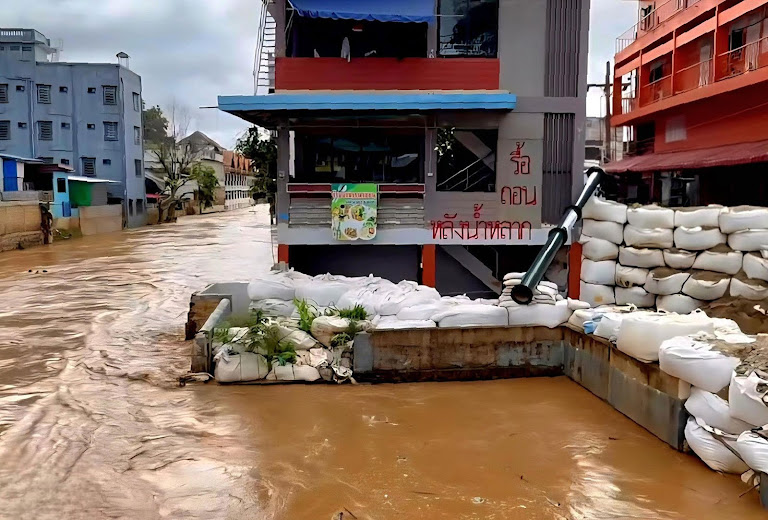Thailand Drowns: Climate Reckoning Unleashes Floods, Futures Hang in Balance
Economic growth fueled climate crisis; Southeast Asian nation confronts floods worsened by global policies.

Another year, another climate reckoning. The Bangkok Post reports that 33 Thai provinces are bracing for flash floods, landslides, and overflowing rivers. The immediate trigger is heavy rainfall. But to treat this as a mere weather event is to mistake the symptom for the disease. What we’re witnessing isn’t just a series of isolated disasters; it’s the unraveling of a planetary equilibrium.
The alert paints a grim picture: overloaded reservoirs, swollen rivers like the Mekong threatening to breach their banks, and authorities scrambling to reinforce flood defenses. Chiang Rai, Ubon Ratchathani, Phuket — a map of vulnerability illuminated by the harsh light of climate change. The Department of Disaster Prevention and Mitigation (DDPM) is urging preparedness, recommending emergency app downloads. Necessary, yes. Sufficient? Not even close.
The announcement, made at 3pm on Saturday, urges authorities in high-risk areas to closely monitor local weather conditions, rainfall and water levels, especially in locations with rainfall in excess of 90 millimetres in any 24-hour period.
The temptation is to frame this as a failure of infrastructure: dams straining under pressure, inadequate drainage systems. But that’s only part of the story. These failures are compounded by decades of development decisions, a Faustian bargain prioritizing short-term economic gains over long-term ecological stability. Consider the relentless deforestation, driven by agriculture and urbanization. A 2021 study in Nature Sustainability found that forest loss in Southeast Asia demonstrably increased flood risk, disrupting natural water cycles and destabilizing landscapes. But even that doesn’t go far enough. It was the World Bank itself, pushing for rapid development in the region throughout the late 20th century, that incentivized many of these environmentally damaging practices. Now the bill is coming due.
Thailand isn’t experiencing this in a vacuum. Globally, rising sea levels are threatening coastal communities, extreme heatwaves are rendering some regions uninhabitable, and more frequent, intense storms are battering infrastructure. The Intergovernmental Panel on Climate Change (IPCC) has been issuing increasingly dire warnings for years: these events are interconnected, they are escalating, and they are a direct consequence of human activity.
The deeper problem isn’t solely physical; it’s fundamentally political and economic. Nations like Thailand find themselves trapped in a cruel paradox. They need to grow their economies to lift populations out of poverty. Yet, historically, much of that growth has relied on practices that exacerbate climate change: burning fossil fuels, clearing land, embracing a model of consumption that is inherently unsustainable. This necessitates agonizing trade-offs and massive investments in adaptive infrastructure, diverting resources from other critical needs. As economist Mariana Mazzucato argues, we need to move beyond a model of “value extraction” to one of “value creation” that prioritizes sustainability and resilience.
What’s required is a seismic shift in mindset, one that transcends simply managing the symptoms of climate change and focuses on preventing its root causes. That demands a fundamental re-evaluation of our global priorities and a binding commitment to transitioning to a truly sustainable future. The flash flood warning in Thailand isn’t just a local news item. It’s a flashing error message in the operating system of our planet, signaling that the climate system is in critical condition, demanding not just a patch, but a complete system reboot.









